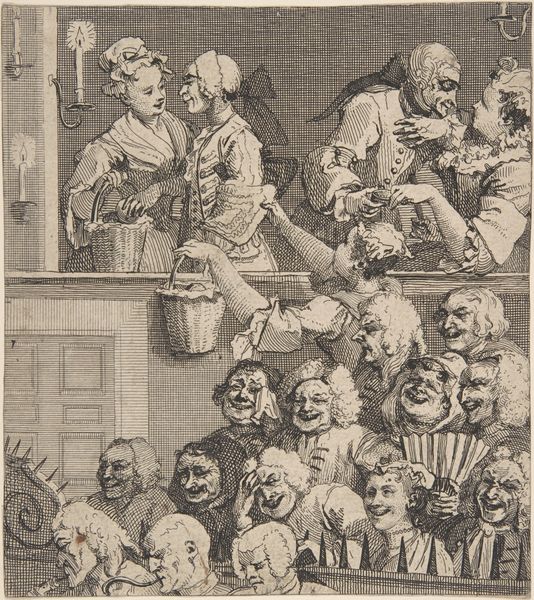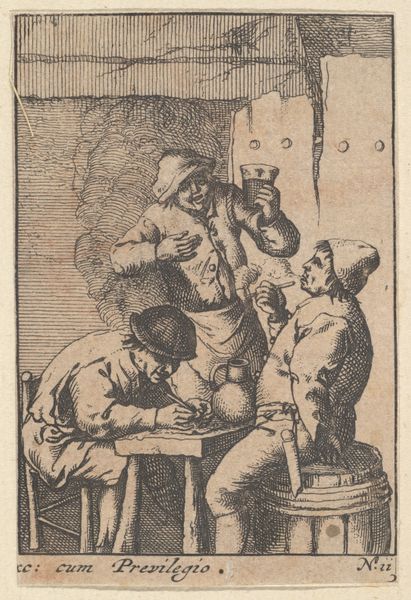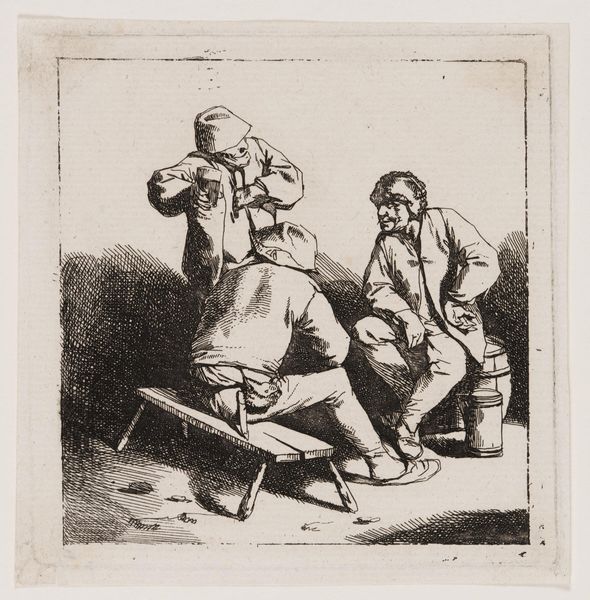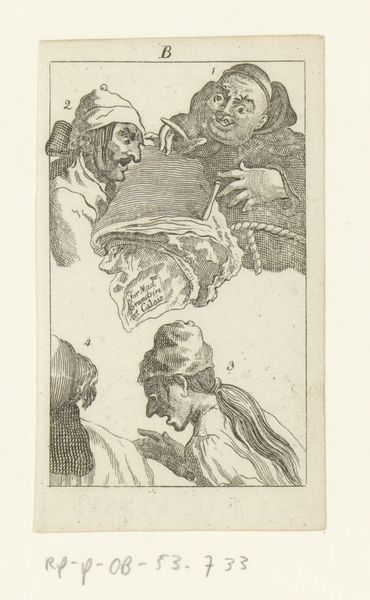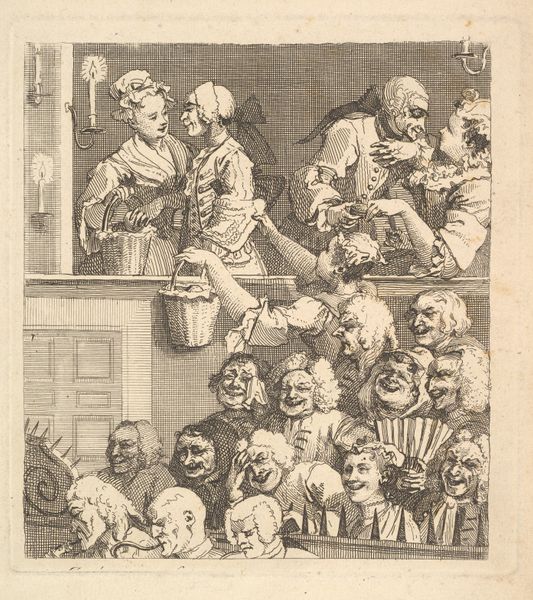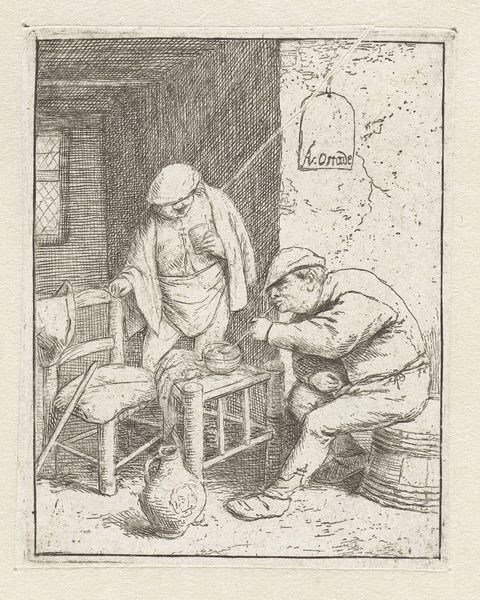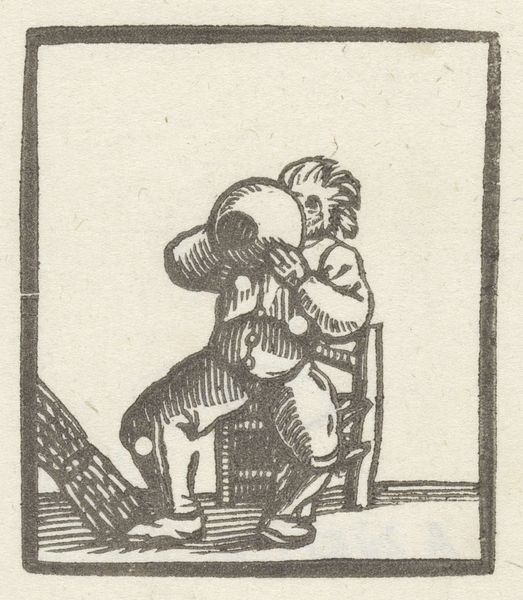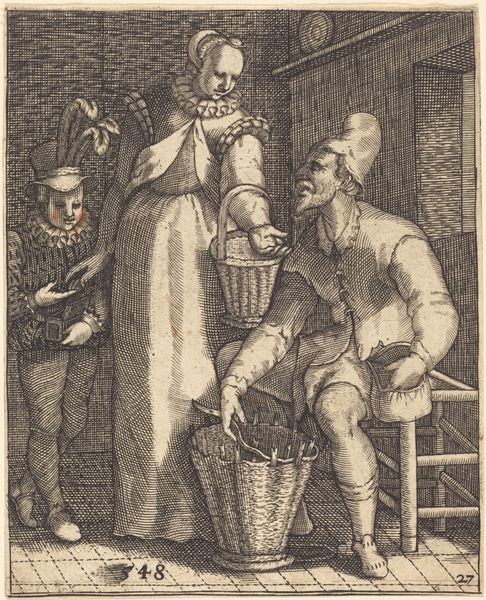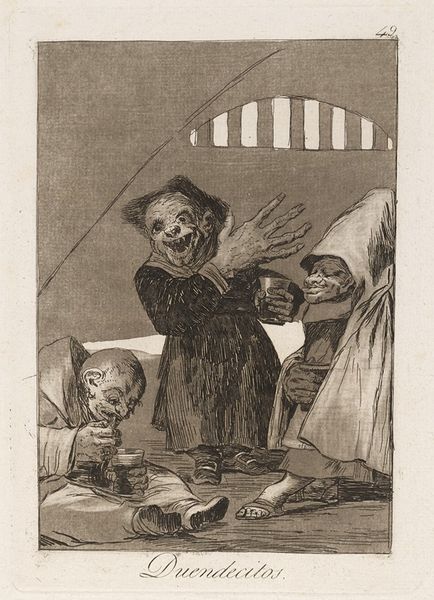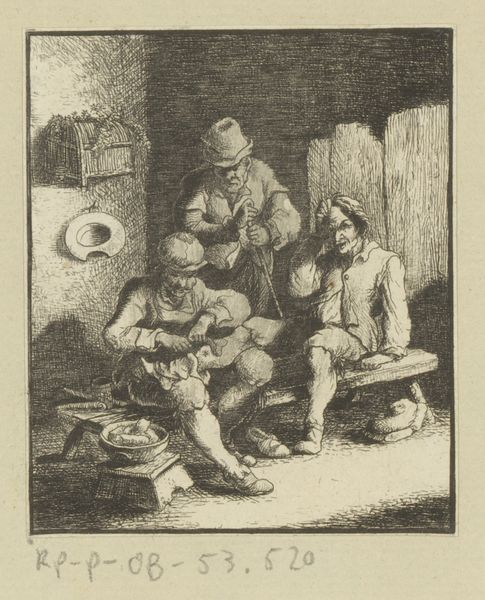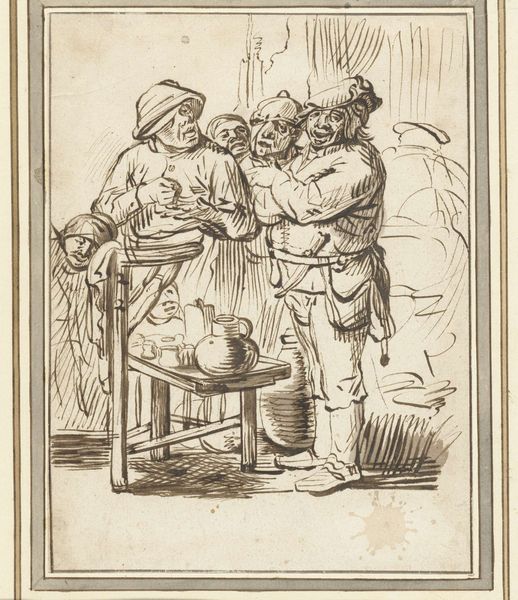
Hier hebt gy jonge Lien, vogels, uyl, kat en nest te sien 1761 - 1804
0:00
0:00
Dimensions: height 397 mm, width 323 mm
Copyright: Rijks Museum: Open Domain
Curator: This engraving, "Hier hebt gy jonge Lien, vogels, uyl, kat en nest te sien," made by Erven de Weduwe Jacobus van Egmont between 1761 and 1804, is more than just a genre scene; it's a window into societal attitudes about childhood, nature, and power. Editor: It feels almost like a set of nursery rhyme illustrations, but with a somewhat unsettling tone, especially considering the animals are all confined. What do you see in this piece? Curator: The image presents childhood as a moment where hierarchies of control are established. Look at the positioning of the children in relation to the animals: caged birds, an owl perched on a finger, a kitten cradled. It invites us to consider how notions of innocence are constructed alongside the taming and control of the natural world, with animals functioning as stand-ins for larger social power dynamics. Editor: So, it’s not just a simple depiction of children and pets? Is there some tension implied between the natural and the social worlds? Curator: Exactly. What does it mean for a child to "own" or control an animal? We might even interpret the children's poses – especially the solemn faces – as evidence that they too, perhaps, are performing a role within societal constraints, foreshadowing a future where they themselves will conform to societal norms. This becomes clear when viewed through feminist or postcolonial lenses. Editor: That's a very interesting point; thinking about who benefits from those performances, and who might be losing their voice... I'll never look at an engraving of children and animals the same way! Curator: These works are so rich in narrative, and reward a contemporary reading.
Comments
No comments
Be the first to comment and join the conversation on the ultimate creative platform.
